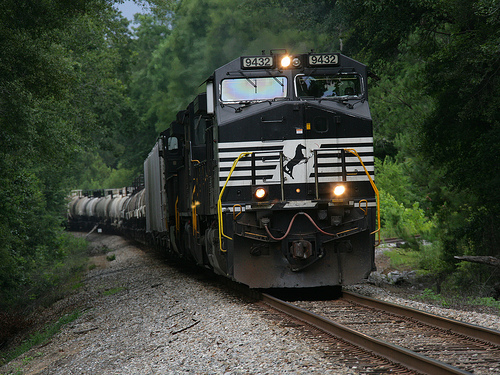After nearly destroying a forest and obliterating a species, one corporation does a 180 and becomes an EcoHero.
The story begins in the 1830’s, when the South Carolina Canal and Railroad Company (SCCRC) bought a 100,000 acre plot of longleaf pine forest near Dorchester, South Carolina. Timber from the forest was an essential element in SCCRC’s expansion, development and continued operation. Not only did timber provide material for cross-ties, trestles and bridges, but most of the then steam powered locomotives burned wood to heat their boilers. This meant a nonstop and insatiable demand for timber which the forest was unable to support.
 Following the destruction and carnage of the civil war, more timber was needed to repair the railroads of the South. Reconstruction was successful; too successful in fact, and SCCRC developed new lines, became overextended and ran into financial trouble. In 1893, the railroad was reorganized as Southern Railway. Most of the mature timber was gone by this time, and nearly all but 14,000 acres of the original 100,000 acre forest had been parceled out and sold off. Red-cockaded woodpeckers, who depend on longleaf pine forests for their survival, were also close to extinction.
Following the destruction and carnage of the civil war, more timber was needed to repair the railroads of the South. Reconstruction was successful; too successful in fact, and SCCRC developed new lines, became overextended and ran into financial trouble. In 1893, the railroad was reorganized as Southern Railway. Most of the mature timber was gone by this time, and nearly all but 14,000 acres of the original 100,000 acre forest had been parceled out and sold off. Red-cockaded woodpeckers, who depend on longleaf pine forests for their survival, were also close to extinction.
Southern Railway’s 180
In 1920, the railway began replanting longleaf and loblolly pines for pulpwood production. Soon afterward, it began to construct a demonstration area for local landowners who were interested in reforesting their land. Southern Railway also opened up its land to forestry students from Universities all across the South.
[social_buttons]
In 1968 the Forest was officially dedicated as the Brosnan forest. In 1999 the railway passed another milestone, and in the interest of the red cocka-ded woodpecker, it enrolled Brosnan forest in the US Fish and Wildlife Service’s safe harbor program. In August of 2008, Norfolk Southern Railway made the news when it announced that it would place 12,000 acres of the forest under conservation easement with the Lowcountry Open Land Trust (the largest such conservation easement by a corporation in South Carolina history).
It took nearly a century of work, investment and commitment, but now, where there was once a nearly exhausted collection of small and shabby trees, their now exists a lush and thriving forest of proud and tall longleaf pines. The red cocka-ded woodpecker have also made a comeback and a thriving community of over 80 clusters can be found, spread throughout the forest. Thanks to Norfolk Southern Railways (renamed from Southern Railway in 1974) efforts, the Brosnan forest and the once endangered red-cockaded woodpecker population have been revitalized.
Image Credits: Emmett Tullos, Moby Dick, Army.mil via Flickr Creative Commons Liscence.







